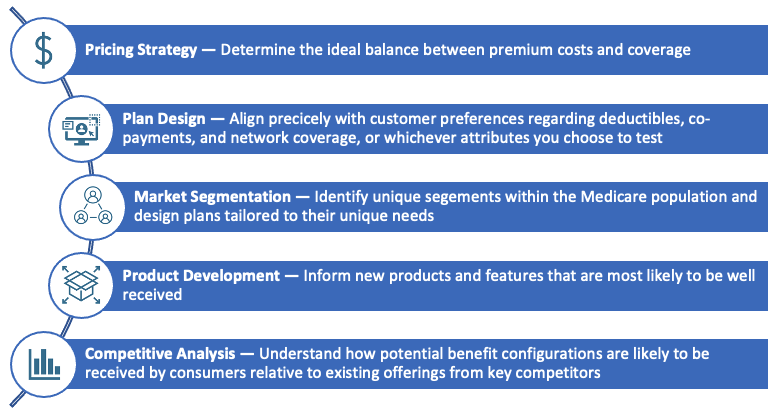
By: Leah Turner
In an ever-evolving healthcare landscape, making informed decisions that cater to your policyholders’ needs is paramount. As a health insurance provider, you are undoubtedly familiar with the complexities and challenges of the industry. This blog post explores a powerful tool that can assist you in this endeavor — Conjoint Analysis.
What Is Conjoint Analysis?
Conjoint analysis is a sophisticated market research technique used to understand how individuals make complex purchasing decisions by breaking products down to their constituent features. It’s essentially a way to peek into the minds of your members and determine what truly matters to them when selecting a plan, given a specified set of product attributes to consider. Conjoint analysis allows end users to understand the relative importance of different health plan attributes (premium, MOOP, network, etc.) and the relative appeal of different values within each attribute. But most importantly, it enables users to build competitive scenarios to simulate how subtle and specific benefit changes are likely to shift preferences for a given product.
Conjoint analysis works by taking survey respondents through an exercise that presents competing health plan options and asks them to select the one they most prefer. These health plan options are randomly defined in terms of a select number of pre-defined attributes, such as monthly premium, network, MOOP, copays, etc. Once a respondent chooses a plan, they are then shown a second set of options with a different configuration of benefits. This process is repeated several times, typically 10–15. The patterns that emerge in individuals’ choices (what they are choosing and what they are avoiding) are then used to construct a model that can be fed into an online simulator where users can construct their own competitive scenarios. The ability to simulate different “what-if” scenarios is where conjoint analysis is most powerful and where the most valuable insights are derived.
Why Is Conjoint Analysis Helpful?
Conjoint Analysis Can Help Solve Issues Related to:

Incorporating Conjoint Analysis into Your Strategy
Conjoint analysis is a valuable tool for health insurance product designers, marketers, and executives seeking to make data-driven decisions in a competitive marketplace. By understanding preferences and tailoring your offerings accordingly, you can enhance customer satisfaction, drive business growth, and maintain a strong competitive position in the industry.